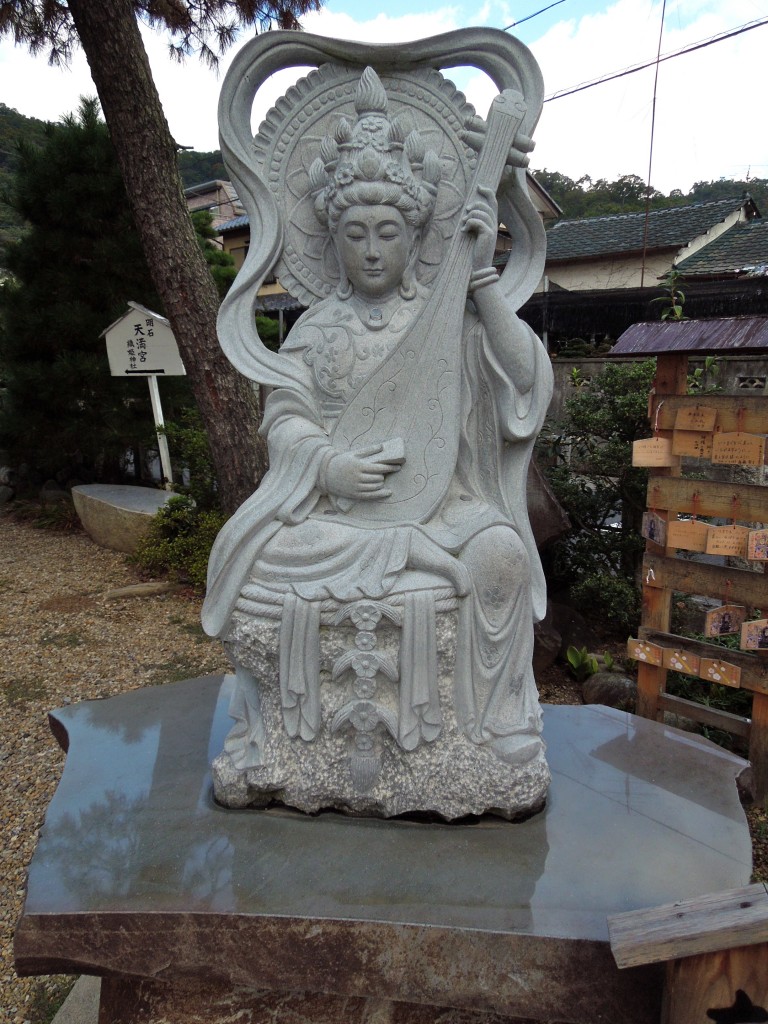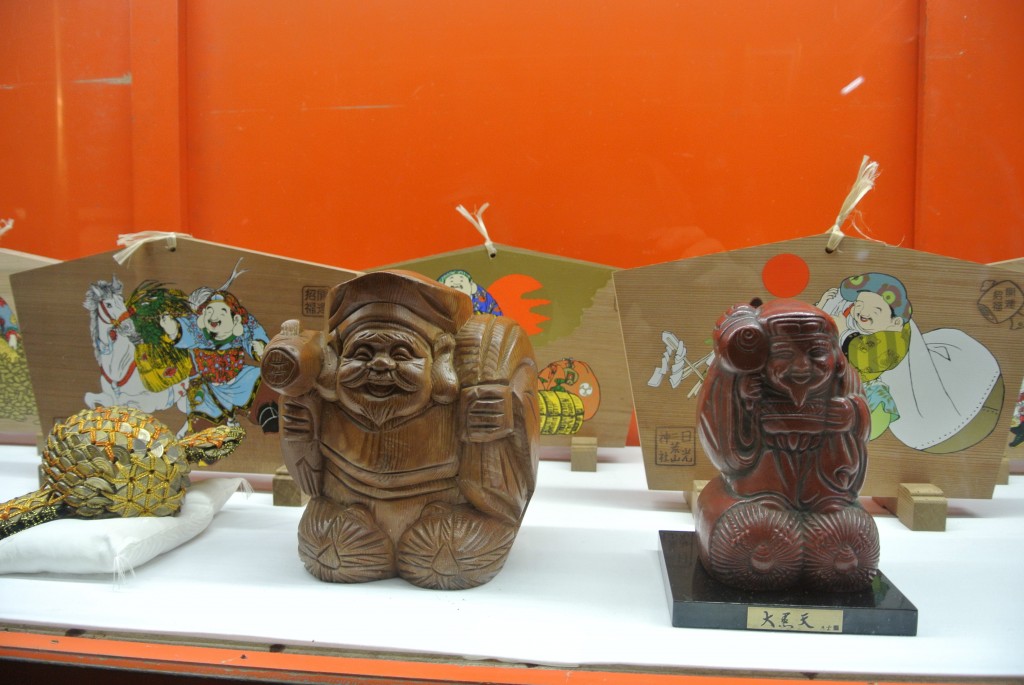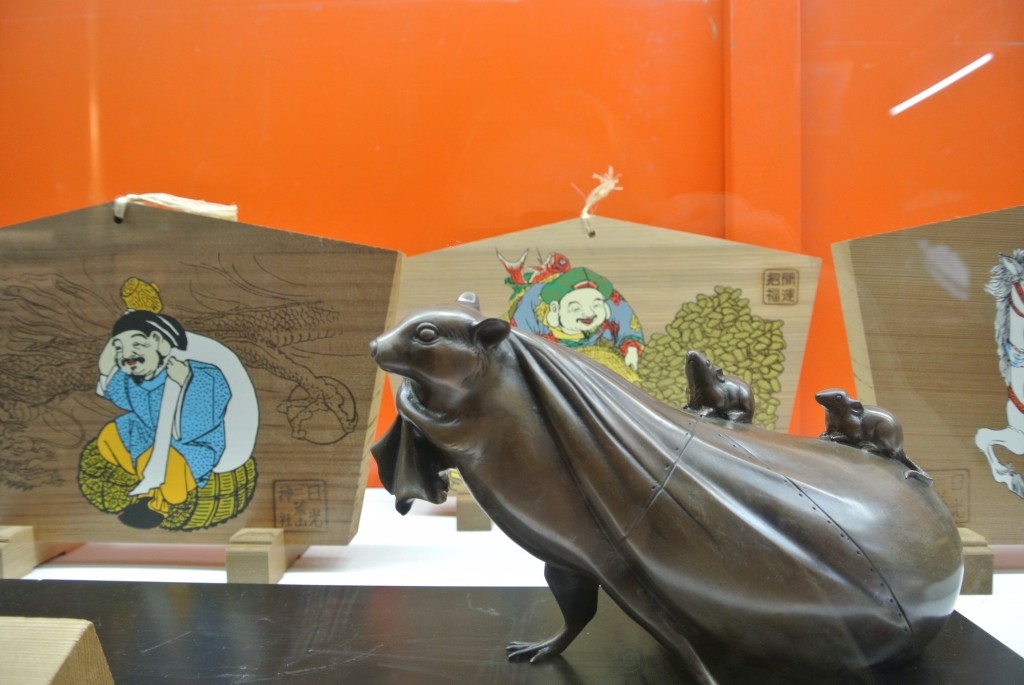Mark Schumacher, compiler of the wonderful onmark A-Z Dictionary of Japanese religions, has produced an authoritative guide to the Seven Lucky Gods (Shichifukujin). This labour of love includes the following:
INTRO Page. Explores their development in art and lore. 50 photos. 16 pages.
Ebisu. Only Japanese god in the group. 16 photos. 5 pages.
Bishamonten. From the Hindu pantheon. 80 photos. 24 pages.
Benzaiten. From the Hindu pantheon. Only female in group. 260 photos. 60 pages.
Daikokuten. From the Hindu pantheon. 36 photos. 12 pages.
Fukurokuju. From the Chinese pantheon. 12 photos. 5 pages.
Hotei. From the Chinese pantheon. 19 photos. 5 pages.
Jurōjin. From the Chinese pantheon. 6 photos. 5 pages.
Various side pages, including Benzaiten’s Main Sanctuaries (52 photos, 16 pages), and Kami of Rice, Food, Agriculture and Wealth (4 photos, 4 pages).
***********************************************************************

Benzaiten, the only female amongst the Seven, playing her biwa
Mark writes…….
Japan’s Seven Lucky Gods (Shichifukujin 七福神) are an eclectic group of deities from Japan, India, and China. Only one is native to Japan (Ebisu). Three are deva from India’s Hindu pantheon (Benzaiten, Bishamonten, Daikokuten) and three are gods from China’s Taoist-Buddhist traditions (Hotei, Jurōjin, Fukurokuju).
In my mind, it is more fruitful to explore the seven within a Deva-Buddha-Kami (Hindu-Buddhist-Shintō) matrix rather than a standard binary Buddha-Kami model. For that reason, special emphasis is given to the three Hindu deva. Although the group’s Japanese origin can be traced back to the 15th century, the set of seven did not become stadardized until the late 17th century.
By the 19th century, most major cities had developed special pilgrimage circuits for the seven. These pilgrimages remain well trodden in contemporary times, but many people now use cars, buses, and trains to move between the sites. Today images of the seven appear with great frequency in Japanese art and media, but unlike olden times, the seven are now often portrayed as cute, lovable and childlike.
The “cutification” of religious icons in modern Japan is widespread and part of a much larger social trend toward cuteness in billboard advertising, corporate branding, sports mascots, street fashion, product design, and a host of other areas. This integrated primer explores the seven’s historical development in Japanese art and lore.

Statues of Daikoku, equated with the kami Onamuchi (aka Okuninushi) worshipped at Futarasan Jinja in Nikko. (There is a collection of cute Daikoku ema and statues in the shrine’s Daikoku-do.)

The rat, familiar of Daikoku aka Okuninushi, here seen in the Daikoku Hall of Futarasan Jinja in Nikko. (Okuni is equated with Daikoku because their names have the same Chinese characters but with different readings.)

This is a topic which is near to my heart… Many thanks! Exactly where are your contact details though?
Thank you, Jann, for the communication. You can find my contact details at the top of the page under the heading for About.